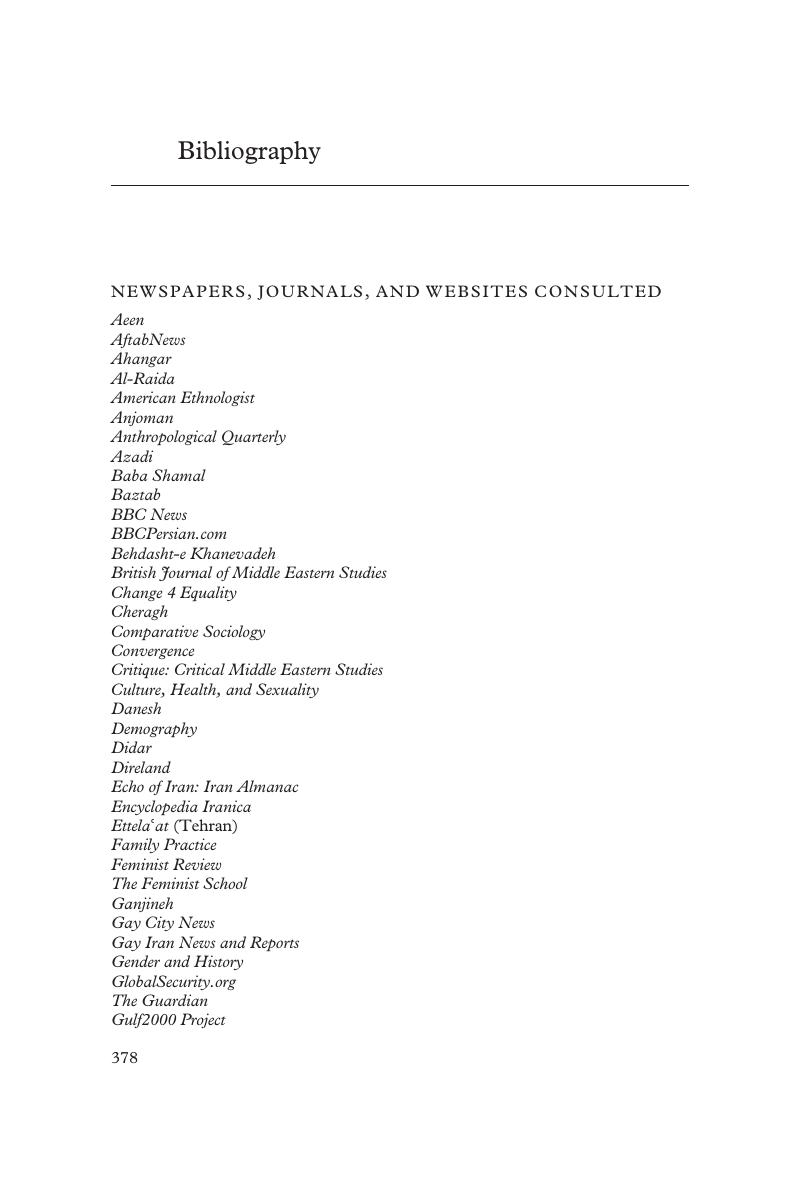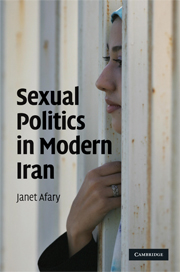Book contents
- Frontmatter
- Contents
- List of illustrations
- Acknowledgments
- Map of Iran
- Introduction
- Part 1 Premodern practices
- Part 2 Toward a Westernized modernity
- Part 3 Forging an Islamist modernity and beyond
- Conclusion: Toward a new Muslim-Iranian sexuality for the twenty-first century
- Glossary
- Bibliography
- Index
- References
Bibliography
Published online by Cambridge University Press: 05 June 2014
- Frontmatter
- Contents
- List of illustrations
- Acknowledgments
- Map of Iran
- Introduction
- Part 1 Premodern practices
- Part 2 Toward a Westernized modernity
- Part 3 Forging an Islamist modernity and beyond
- Conclusion: Toward a new Muslim-Iranian sexuality for the twenty-first century
- Glossary
- Bibliography
- Index
- References
Summary

- Type
- Chapter
- Information
- Sexual Politics in Modern Iran , pp. 378 - 410Publisher: Cambridge University PressPrint publication year: 2009



